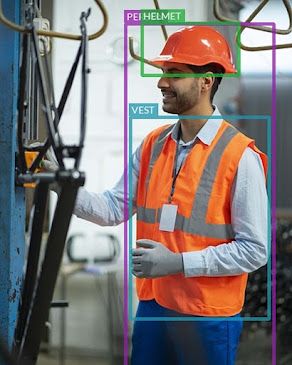Asset Management in the Manufacturing Industry: Enhancing Efficiency with AI-powered Defect Detection
Introduction
Asset management in manufacturing industry plays a pivotal role in the success of the industry. From machinery and equipment to inventory and resources, effectively managing assets is crucial for optimizing productivity and reducing costs. In recent years, the advent of artificial intelligence (AI) has revolutionized asset management practices, particularly in the realm of defect detection. By harnessing the power of AI, manufacturers can now detect and address defects with unparalleled accuracy and efficiency. In this blog post, we will explore the significance of asset management in the manufacturing industry and delve into the transformative potential of AI-powered defect detection systems.
Asset Management: A Cornerstone of Manufacturing Excellence
The manufacturing industry heavily relies on various assets, ranging from production lines and heavy machinery to warehouses and transportation fleets. Efficient asset management in manufacturing industry ensures these resources are well-maintained, utilized optimally, and aligned with production goals. It involves a comprehensive approach that encompasses asset tracking, maintenance, performance monitoring, and lifecycle management. Effective asset management enables manufacturers to enhance equipment uptime, minimize downtime, improve asset utilization, and streamline operations.
The Rise of AI-powered Defect Detection for manufacturing
Defects in manufacturing processes can have severe consequences, leading to product recalls, customer dissatisfaction, and significant financial losses. Traditionally, defect detection involved manual inspections, which were time-consuming, prone to errors, and lacked consistency. However, with advancements in AI and computer vision technologies, manufacturers now have access to AI-powered defect detection systems that can rapidly analyze vast amounts of visual data and identify even the slightest anomalies.
AI-powered defect detection for manufacturing leverage machine learning algorithms to analyze images or videos of production processes in real-time. These systems can detect subtle defects that might be imperceptible to the human eye, ensuring higher product quality and reducing the risk of faulty products reaching the market. By automating the defect detection process, manufacturers can significantly improve production efficiency, reduce waste, and enhance overall quality control.
The Benefits of AI-powered Asset Management
Implementing AI-powered defect detection as part of asset management practices brings numerous benefits to the manufacturing industry. Firstly, it enables manufacturers to identify defects early in the production cycle, facilitating prompt corrective actions and preventing the production of defective products. This, in turn, reduces costs associated with rework, scrap, and customer returns.
Furthermore, AI-powered asset management systems provide valuable insights into asset performance, predictive maintenance needs, and process optimization opportunities. By analyzing data collected from various assets, manufacturers can make data-driven decisions to improve asset utilization, schedule maintenance proactively, and optimize production processes.
Conclusion
In the manufacturing industry, effective asset management is essential for ensuring operational efficiency, reducing costs, and maintaining high product quality. With the integration of AI-powered defect detection systems, manufacturers can take asset management to new heights, detecting defects with unprecedented accuracy and speed. By embracing this technology, manufacturers can unlock significant productivity gains, enhance customer satisfaction, and drive sustainable growth in the highly competitive manufacturing landscape.


Comments
Post a Comment